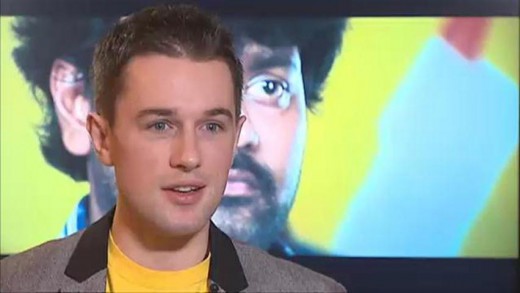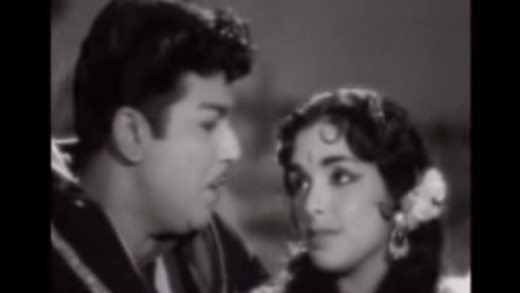India is home to over 105 million tribal people, belonging to 31 different tribes. Tribal populations enter the realm of mainstream attention only when crisis – from land displacement to gender violence – manage to hit newspaper headlines. But how much do we really know about them as people – their lives, their traditional wisdom, cultures and struggles?
Here is a selection of award winning films made by Independent film-makers on indigenous communities in India covering a range of subjects, from the need to preserve their traditional forms of knowledge, to the threat to livelihoods, the environment, and their uneasy relationship with development. The films bring us closer to people who are at the margins of our consciousness, finding little space and attention in mainstream media, far away, physically and mentally from cities and city people.
1. The Red Data Book – An Appendix
72 mins – 2014 – Director: Sreemith Shekar
The documentary, ‘The Red Data Book-An appendix‘ highlights the increasing infant mortality within Adivasi communities in Attappady, Kerala. As the community faces extinction, the film questions if infant mortality is due to malnutrition as the State claims or because of our inability to comprehend their way of life. The activist filmmaker Sreemith captures the everyday rhythms of Adivasi life to try and find answers. The film was a part of the prestigious IDSFFK 2014 film festival in Trivandrum this year.
2. Notes on Man Capture
43 mins – 2007 – Director: Nandini Bedi
A rare find in a male-centric culture such as ours, the film focuses on customs of marriage in the Garo Hills where men are ambushed and captured to be married off to women within the community. The film follows a young single mother who has had former lovers in her attempt to claim a suitable man. With humour and ease it takes on subjects like sex, decision making, gender, and power dynamics in this unusual people in India.
3. Have you seen the Arana?
73 mins – 2012 – Director: Sunanda Bhat
Set in Wayanad, Have You Seen The Arana is a lyrical film that gently urges us to take a look at how local people, their way of life, forms of knowledge and well being is threatened owing to rapid ‘development’ in the region. A far cry from most ‘issue based’ films, the film is undeniably poetic, with breaktaking visuals, and an engaging structure. As the filmmaker journeys through the beauty of Wayanad, she constructs a narrative involving a healer concerned with disappearing medicinal plants in the forest, a traditional farmer, and a cash crop cultivator, all struggling to survive the here and now.
4. India’s Silent War, 2011
48 mins – 2011 – Director: Imran Garda
http://bcove.me/0svsx32o
Al Jazeera’s journalist Imran Garda examines a underrported 40-year war that has claimed thousands of lives in the heart of our country but remains largely ignored by urban Indians and the world outside. The Adivasis, the original inhabitants of the land who populate our impenetrable and remote jungles are caught in the middle of a conflict between the governement and Naxalites or Maoists. The film takes us to Chhattisgarh, Jharkhand, Orissa, and West Bengal to introduce us to this ‘hidden war’ in our background, bringing us face to face with rebel fighters and the nameless victims of this terrible conflict.
5. There Is A Fire In Your Forest
53 mins – 2001 – Director: Krishnendu Bose
The film focuses on the untold story of Kanha, in Madhya Pradesh. Known more as a tiger conservancy, Kanha was also the site that witnessed the first wave of adivasi relocation in the early 1970s. A must watch for anyone wanting to understand the adivasi side of the story in India, the film has as its central character, a wildlife photojournalist, who visits Kanha and finds a change in his understanding of ‘conservation’.
6. In the forest hangs a bridge
39 mins – 1999 – Director: Sanjay Kak
Set deep in the forested hills of Siang Valley of Arunachal Pradesh, the residents of Damro Village get together to build a 1000 foot long suspension bridge from cane and bamboo in the distinctive style of the Adi tribe. Their only tool is the dao, a machete or blade made of tempered steel. The film then becomes a metaphor for the strength and fragility of the tribal community as they set about this challenge.
7. Only An Axe Away
40 mins – 2005 – Director: P. Baburaj
The film chronicles the efforts to save the Silent Valley in Kerala. Declared a national park in 1984, the state plans to build a dam across river Kunthi, environmentalits and the people share their anxieties that the move would ruin the evergreen forests forever.
8. Acting Like a Thief
15 mins – 2005 – Director: P. Kerim Friedman & Shashwati Talukdar
The film is about a tribal theatre group in Ahmedabad. The Budhan Theatre, inspired by the work of Mahasweta Devi, it has transformed the lives of adults and children who belong to the Chhara tribe or community. The film chronicles the arrest of one of its playwrights and harks back to 1871 when the tribals were notified as ‘natural criminals’ by the then British Raj. Even post independence, little has changed for these people, for despite being denotified, they are still unable to shake off the shadows of their past.
This post was originally published by our partners at The Alternative (Author: Preeti Prakash).

 The Alternative
The Alternative








